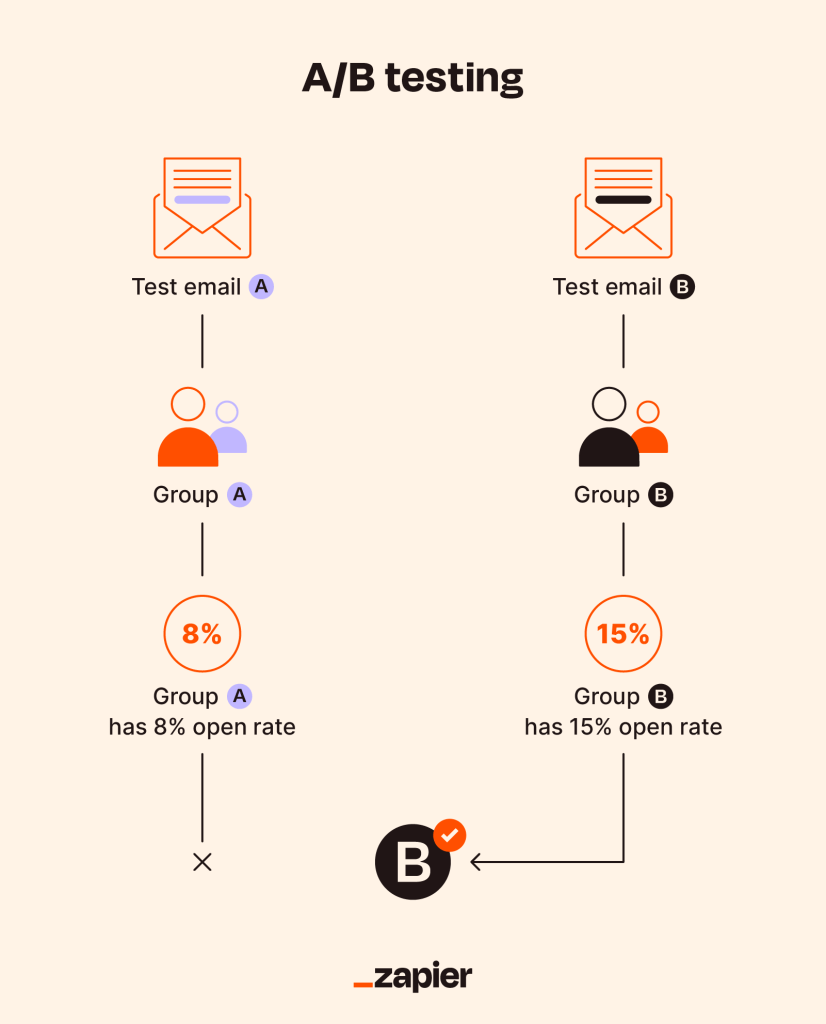
In the world of digital marketing, data-driven decisions are paramount. Marketers need to understand what resonates with their audience and what drives conversions. One highly effective method for achieving this is A/B testing. A/B testing, also known as split testing, involves comparing two versions (A and B) of a webpage, email, or ad to determine which one performs better. When executed correctly, A/B testing can provide valuable insights that lead to improved marketing strategies and higher conversion rates. In this blog, we’ll explore the concept of A/B testing and offer tips for success.
What Is A/B Testing?
A/B testing is a controlled experiment where two or more variations of a marketing asset are compared to determine which one performs better in terms of a specific metric, such as click-through rates, conversion rates, or revenue generated. The goal is to identify changes that can enhance user engagement and drive desired actions.
Here’s a simplified example: Imagine an e-commerce website wants to optimize its product page to increase purchases. The company creates two versions of the page: Version A with the existing design and Version B with a revised layout and more prominent call-to-action buttons. By randomly showing half of the visitors Version A and the other half Version B, the company can compare which version leads to more conversions.
Why A/B Testing Matters

A/B testing is crucial for several reasons:
- Data-Driven Decision Making: A/B testing allows marketers to make decisions based on data rather than assumptions. It provides concrete evidence about what works and what doesn’t.
- Continuous Improvement: By testing different elements of a campaign, marketers can iteratively improve their strategies over time. Small changes can lead to significant improvements.
- Optimizing User Experience: A/B testing helps enhance the user experience by identifying design and content changes that resonate with the target audience.
- Cost Efficiency: Instead of making sweeping changes to a marketing campaign, A/B testing allows for precise adjustments, reducing the risk of costly mistakes.
- Competitive Advantage: Marketers who embrace A/B testing are better equipped to stay ahead of the competition by staying up-to-date with user preferences and industry trends.
Tips for Successful A/B Testing
A/B testing is a powerful tool, but it’s essential to approach it strategically to yield meaningful results. Here are some tips for successful A/B testing:
1. Clearly Define Your Goals
Before conducting any A/B test, you need to establish clear and specific goals. What do you want to achieve with the test? Whether it’s increasing click-through rates, improving conversion rates, or boosting revenue, defining your objectives will guide your testing process.
2. Focus on One Variable at a Time
To pinpoint the factors that impact your desired outcomes, focus on testing one variable at a time. This could be the color of a call-to-action button, the headline text, or the placement of an image. Testing multiple changes simultaneously can muddle the results and make it challenging to determine which specific change drove the difference.
3. Create Hypotheses
Before launching a test, formulate hypotheses based on your insights and observations. For example, if you suspect that changing the wording of a headline will improve click-through rates, create a hypothesis that clearly states your expectations. This helps you stay focused on your objectives.
4. Use A/B Testing Software
A/B testing requires specialized software to track user interactions and measure results accurately. Numerous tools, such as Google Optimize, Optimizely, and VWO, are available to streamline the testing process and provide robust analytics.
5. Ensure Sufficient Sample Sizes
For A/B test results to be statistically significant, you need a large enough sample size. Testing with too few users can lead to inconclusive results. Calculate the required sample size based on your desired confidence level and margin of error to ensure accuracy.
6. Run Tests for an Adequate Duration
The duration of your A/B test should be long enough to account for variations due to factors like day of the week or time of day. Avoid concluding tests prematurely, as this can lead to unreliable results. Consider factors like seasonality and industry trends when determining the test duration.
7. Monitor Test Results Closely
Keep a close eye on the progress of your A/B test throughout its duration. Ensure that both variations are running smoothly and that there are no technical issues affecting user experience.
8. Segment Your Audience
Segmentation can provide deeper insights into user behavior. Consider segmenting your audience by demographics, geographic location, or behavior to understand how different groups respond to your variations.
9. Don’t Ignore Negative Results
Not all A/B tests will yield positive results. Negative results are just as valuable because they help you eliminate strategies that don’t work. Use this information to refine your hypotheses and continue testing.
10. Implement the Winning Variation
Once you’ve identified a winning variation that consistently outperforms the original, implement it as part of your marketing strategy. Don’t forget to document the results, as this can serve as a valuable reference for future campaigns.
Real-World Examples of A/B Testing Success
A/B testing has led to significant improvements for many companies. Here are a few real-world examples:
- Google: In one A/B test, Google [changed the shade of blue](https://www.wired.com/2014/10/the-science-of-thousands-of-cute-blue-links/) used for search result links. This seemingly minor change led to an additional $200 million in annual revenue.
- Amazon: Amazon regularly conducts A/B tests on its product pages to determine the most effective design and layout for increasing sales. These tests have contributed to Amazon’s reputation as an e-commerce giant.
- Barack Obama’s Presidential Campaign: During his 2012 re-election campaign, Barack Obama’s team used A/B testing for fundraising emails. By testing different subject lines and calls to action, they [generated an additional $60 million](https://blog.optimizely.com/2013/04/17/the-inside-story-of-obamas-2012-campaign-applying-the-lessons-learned/) in campaign contributions.
A/B testing is a fundamental practice for digital marketers seeking to optimize their campaigns and improve conversion rates. It’s a data-driven approach that helps you understand your audience better and make informed decisions. By defining clear goals, testing one variable at a time, and following best practices, you can harness the power of A/B testing to drive success in your digital marketing efforts. Remember that A/B testing is an ongoing process of refinement and improvement, so embrace it as an essential tool in your marketing toolkit.



